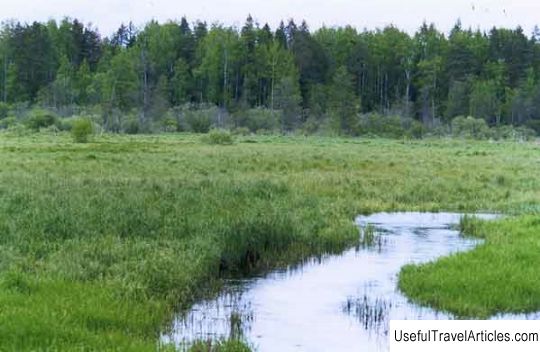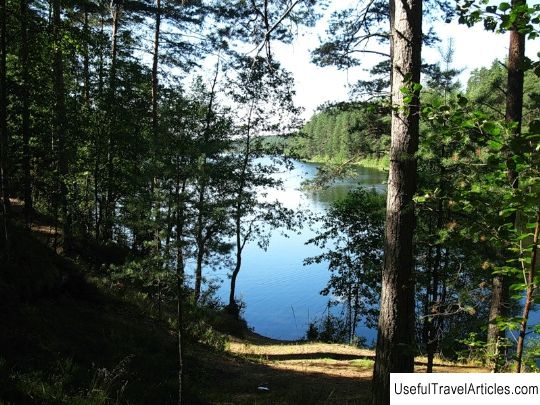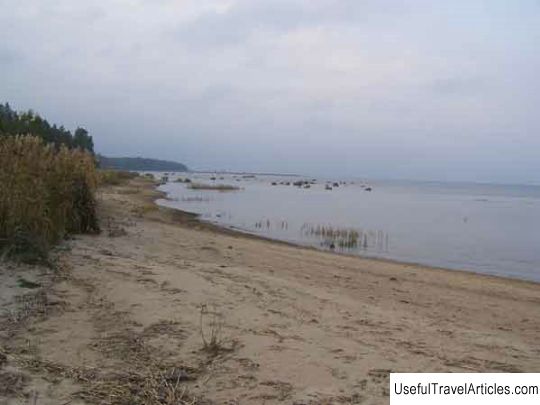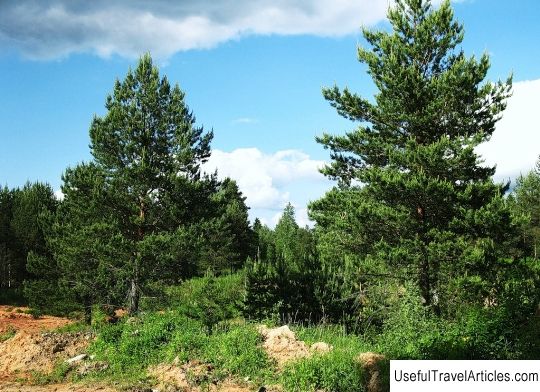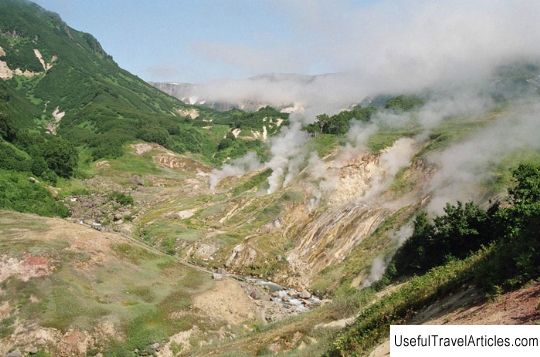Pinezhsky nature reserve description and photos - Russia - North-West: Arkhangelsk region
Rating: 8,2/10 (3709 votes) 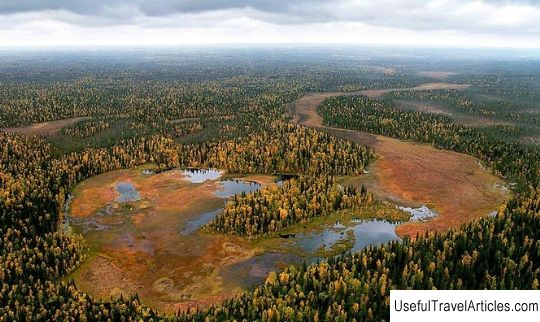
Pinezhsky nature reserve description and photos - Russia - North-West: Arkhangelsk region. Detailed information about the attraction. Description, photos and a map showing the nearest significant objects. Photo and descriptionThe Pinezhsky Reserve is a state nature reserve. Formed on August 20, 1974. The reserve is located in the Pinezhsky district of the Arkhangelsk region, at the southeastern end of the White Sea-Kuloi plateau. Its area is 51522 hectares, the buffer zone is 30545 hectares. Several small rivers and streams flow through the territory of the Pinezhsky Reserve. 87% of the reserve is occupied by forests, swamps - about 10% (mainly sphagnum). More than 25% of the reserve's forests are indigenous, the rest are derived from burnt-out sites and old clearings. Spruce and pine forests dominate. Birch and larch trees occupy a small area. The most interesting are the pine-larch and larch forests located in karst areas, as well as indigenous spruce forests, which are constantly decreasing in Northern Europe. Of particular value are 200-300-year-old Siberian larch forests, which are located here at the northwestern borders of the range. This is one of the last ship groves in the Arkhangelsk region. Even during the reign of Ivan IV the Terrible, local larch, characterized by high quality timber, was harvested for export. Under Peter I, she was sent to build the Russian fleet. Larch felling was carried out until 1917, so it almost disappeared in this area. The karst relief, impassable for those times, saved the grove on the Sotka River. Now the area of the grove is 1734 hectares. Powerful trees, about 30 meters high and with a trunk diameter of 0.7 to 1 meter, grow on a gypsum base, which is covered with a thin layer of soil. Arkhangelsk larch seeds are in high demand in the international market. The flora of the Pinezhsky Reserve consists of 505 species of vascular plants (taiga, arctic, hypoarctic and arctic-alpine species) 245 - bryophytes, 133 - lichens, 40 - edible mushrooms. Endemics and relics of the reserve make up 27% of the plants in the reserve. They are the most important objects for preserving the gene pool of our flora. Most of the relics (reticulate willow, eight-petalled and point dryads, alpine zhiryanka, alpine arctous and others) belong to calciphiles and find favorable conditions for growth and development in places where carbonate rocks outcrops. The amazing violet, Haller's corydalis and some other plants are relics of warming periods. Middle Pinezhie is considered one of the richest relics of the European North. Some species of the reserve's plants are listed in the Red Book of the Russian Federation: the lady's slipper, the Traunsteiner's fingernail, the bulbous calypso, the leafless chinfoot (orchid family), the Pinega (carnation family), Fremont's bioria and pulmonary lobaria (lichens), pistil horned, white aspen and coral blackberry (mushrooms). The fauna of the Pinezhsky reserve is typically taiga. Mammals are represented by squirrels, chipmunks, bears, lynxes, wolverines, pine martens, otters, and elks. Karst landscapes, rich in shelters, are a favorable habitat for marten, lynx and many other animals and birds. Non-freezing wormwood on the rivers contribute to the settlement of the otter. The Pinega taiga has long been famous for the supply of upland game. There are especially a lot of hazel grouses, wood grouses, there is a goshawk, black and three-toed woodpeckers, and a little owl. On the Sotka River there is a dipper (an inhabitant of mountain reservoirs). The rocky banks of the river were occupied by buzzards and crows. There are also several relatively southern bird species in the reserve: wood pigeon, woodcock, sparrows, magpie, crow. Reptiles are represented by a viviparous lizard and a viper, amphibians - by a grass frog. Pike, perch, minnow and others are found in the reservoirs of the reserve, and whitefish, salmon and grayling spawn in the middle reaches of the Sotka River and its tributaries. About 500 caves have been discovered on the territory of the Pinezhsky Reserve. Their total length is approximately 45 kilometers. The largest caves are the Kulogorskaya-Troy system (16,500 meters), Olympic-Lomonosovskaya system (9110 meters), Kumichevka-Vizborovskaya system (7250 meters), Constitutional (6130 meters), Northern Siphon (4617 meters), Golden Key (4380 meters), Symphony (3240 meters), Bolshaya Pehorovskaya (3205 meters) , Leningradskaya (2970 meters). The most suitable for excursions is the Golubinsky Proval cave, which is 1620 meters long.          We also recommend reading Teatro Nacional D. Maria II description and photos - Portugal: Lisbon Topic: Pinezhsky nature reserve description and photos - Russia - North-West: Arkhangelsk region. |
